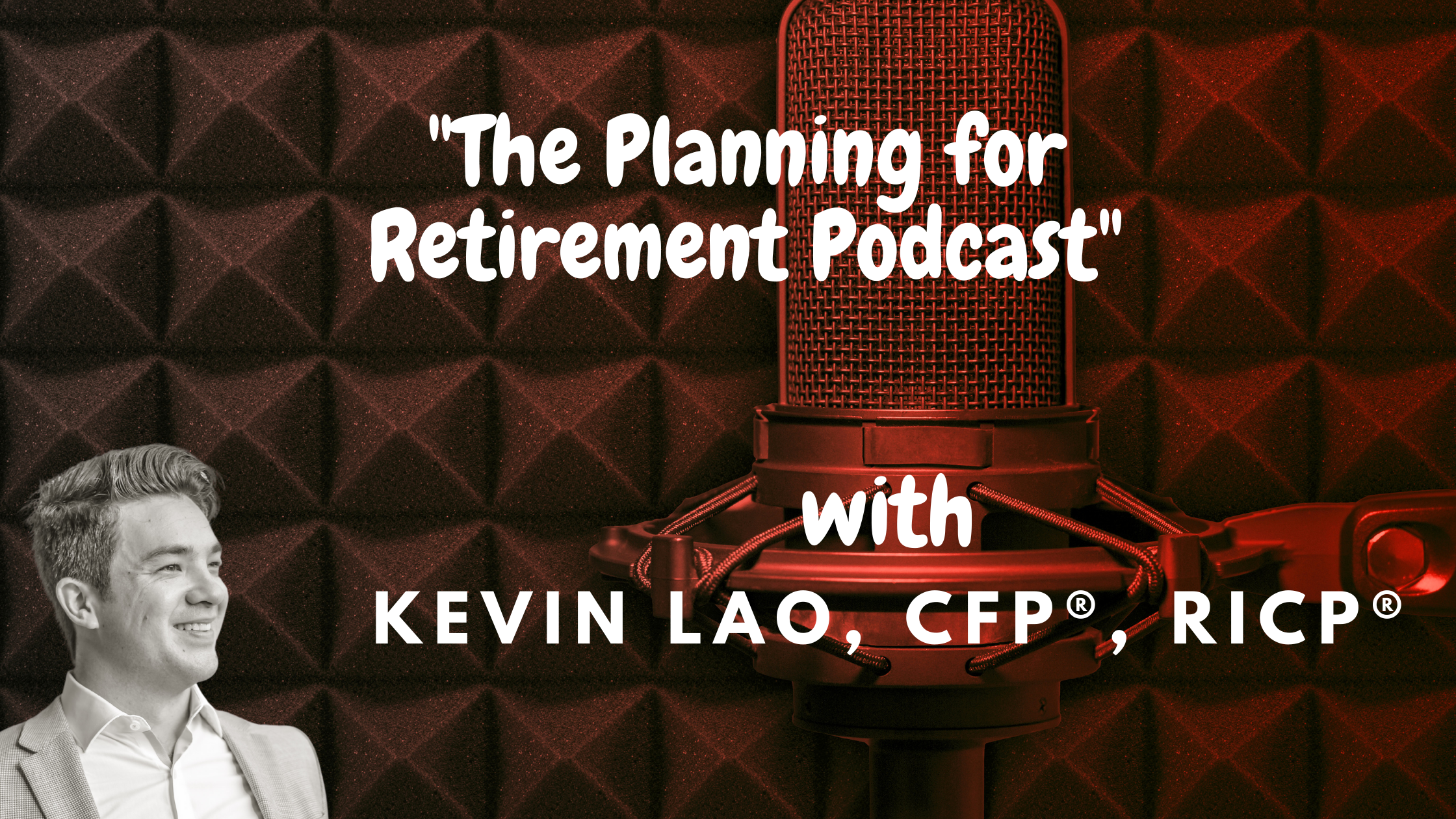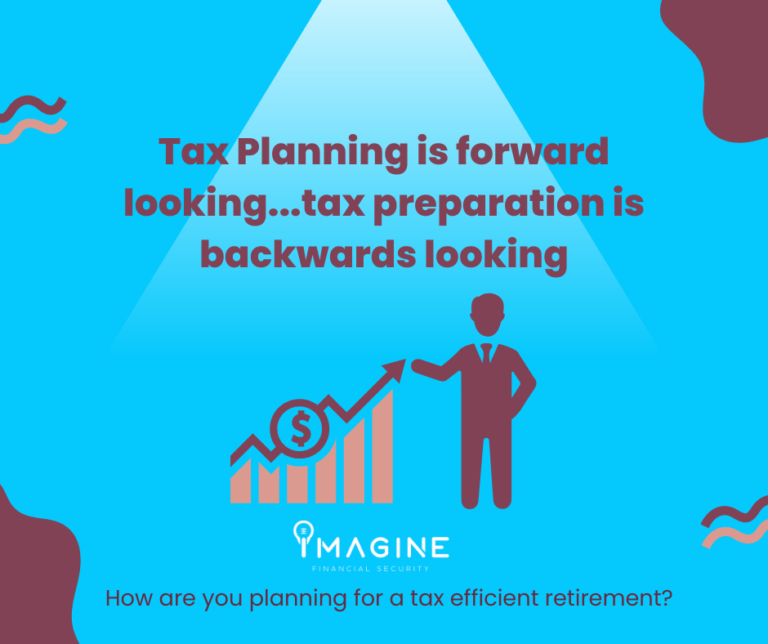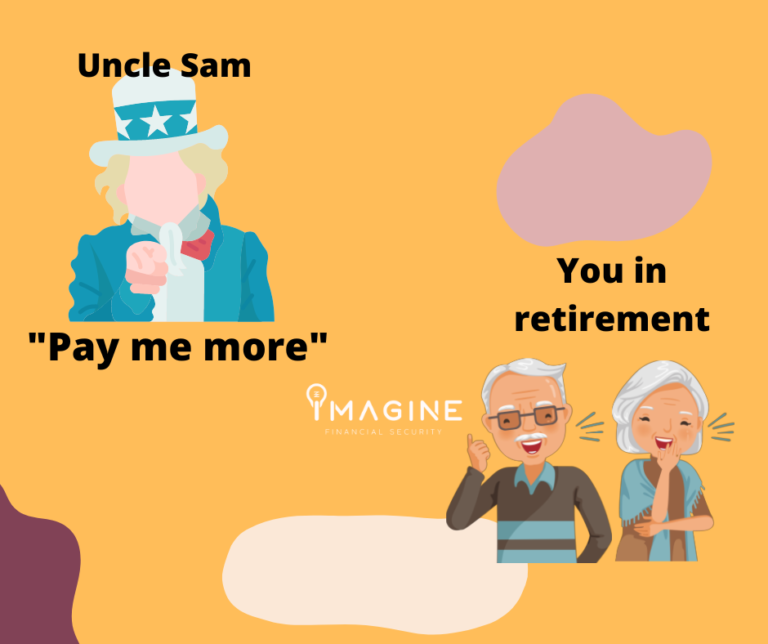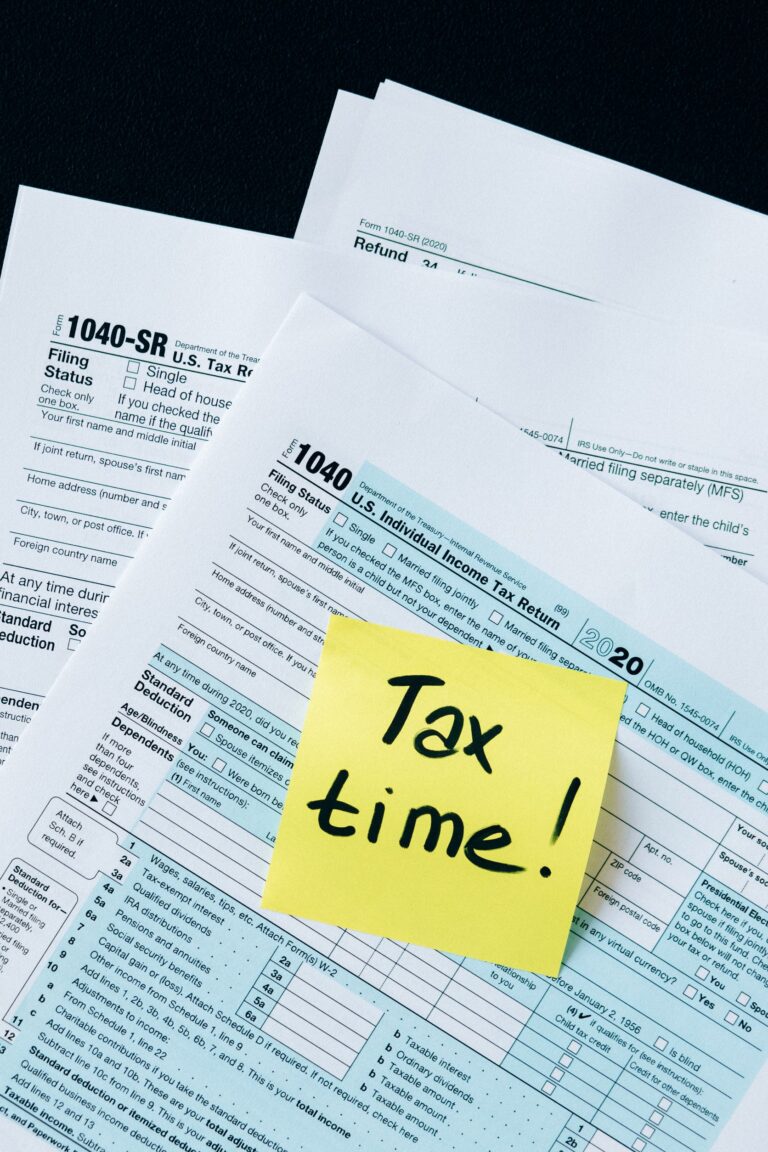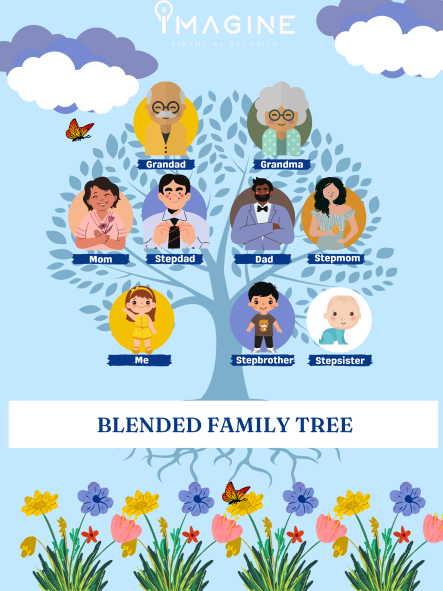Kevin Lao (KL):
Hello everyone, and welcome to the planning for retirement podcast, where we help educate people on how retirement works. I’m Kevin Lao, your host. I’m also the lead financial planner at imagine financial security. Imagine financial security is an independent financial planning and investment firm based in Florida.
However, this information is for educational purposes only and should not be used as investment legal or tax advice.
This is episode number 13, called planning for healthcare costs in retirement. Hope you enjoy the show. And if you like what you hear, leave us a five star review and make sure to subscribe or follow and stay up to date on all of our latest episodes.
I’m very excited today to be joined by Ari Parker. Ari is the head Medicare advisor of Chapter, and is one of the country’s leading Medicare experts. He’s helped thousands of Americans sign up for Medicare, breaking it down into simple bite size pieces. I like that simple. His work has been featured in Forbes, CNBC, CBS money, watch market watch Huffington post, and many other publications.
He’s a graduate of Stanford law school. He trains and leads Chapter’s team of 30 plus licensed Medicare advisors and lives in Phoenix with his wife and two dogs. His book is coming out in September.
“It’s not that complicated” is the title of the book, the three Medicare decisions to protect your health and money.
Their website is ask chapter.org and Ari’s email is Ari@Ask chapter.org. Ari. Thank you so much for joining today. Appreciate it.
Ari Parker (AP):
Pleasure to be with you, Kevin.
KL:
So I am excited to have you on mainly because my firm, obviously being in Florida, I specialize in retirement planning and oftentimes healthcare and Medicare questions come about.
And I’ve been doing this for 14 years now and I still feel like Medicare confuses me. How do you feel about that?
AP:
Absolutely. It can be very confusing. People aren’t sure which enrollment deadlines apply to them, whether they need to sign up for it or not.
This is why I wrote a book on it. And it’s something that our team helps people with every day.
KL:
Love it. Love it. Well, for this episode I reached out to you earlier this week. I like to do episodes based on real life questions that I field from my clients. This one, I’m gonna call them Jack and Diane. Jack is 66. Diane is 57. Okay. Their daughter just had twins. I can relate, I’ve been there.
We had twins a couple of years ago, understandably so it takes a village to raise twins. So now they want to sell their house here in Northeast Florida and move closer to their daughter. Um, so instead of Jack working a few more years and getting Diane closer to that age, 65, that magical age, 65 of Medicare eligibility, and also his age 70, which would be the full social security benefit.
They’re wondering, Hey, you know what if Jack retired tomorrow and they moved closer to their daughter to be near their twins? Now the decisions are what do they do with healthcare, right? I mean, we’ve got Diane who’s eight years away from turning 65 and being Medicare eligible.
And then we’ve got the decision for Jack and he needs to then enter into this world of complexity of Medicare, which hopefully you can break that down. So what I thought we would do is maybe start with the Medicare decisions, and then we can transition into Diane’s decisions around healthcare pre-Medicare. So why don’t we just start with the basics of Medicare?
Let’s pretend I’m Jack, what would you say to me?
Basics of Medicare
AP:
I’d like to summarize. Jack is 66 years old and has retired. Diane is 57 years old, but isn’t working.
KL:
Correct.
AP:
It is very likely that Jack should enroll in Medicare. Jack by virtue of having retired from a large group employer, which is defined as 20 employees or more has a special enrollment period to start Medicare, that enrollment period lasts eight months.
Jack probably doesn’t want a gap in his coverage. So it’s important to do it sooner than later. You don’t wanna wait until the end of the eight month period. You don’t wanna miss that period either because then you’re in a whole world of pain.
KL:
You get slapped with penalties, right?
AP:
Yes. I’m happy to get into the penalties, but it is very likely that Jack should enroll in Medicare. It’s a five minute process. He can do it online through his ssa.gov portal. And then yep. Happy to get into what Medicare covers.
KL:
It’s very easy to enroll in Medicare. But you hear all of these questions like, okay, what you do with original Medicare versus Medicare advantage? I think I read a trend recently that the number of people buying Medicare advantage plans has been going up by roughly 34% per year which is substantial.
So it’s gaining traction. Why don’t we talk about the differences between traditional Medicare versus the Medicare advantage route?
Medicare Original vs. Medicare Advantage
AP:
Original Medicare has two parts, part a is hospital insurance, which covers you when you’re inpatient. It also covers hospice care, skilled nursing facilities. It means you’re inpatient.
Part B is outpatient coverage. It’s visits to the doctor to specialists, ambulance services, durable medical equipment, even outpatient surgery, all covered under Medicare part B. For Jack because he’s paid federal income taxes for at least 10 years. Part a hospital is premium free. There’s a charge for part B.
However, that charge will be $170 and 10 cents per month for 2022 and might go up for next year. We don’t know yet those numbers will be released in the fall. But there’s a charge for part B and most Americans pay $170 and 10 cents. Mm-hmm what Jack will get in return is 80% of his medical services covered.
He’ll owe the other 20% out of pocket with no cap. My mom just had a knee replacement, $40,000 procedure. Original Medicare picked up $32,000. If she hadn’t had any additional coverage, she would’ve owed eight, $8,000 out of pocket, plus all the pre-op post-op physical therapy. Which is why you would then think about that.
KL:
They call this medigap coverage, right? The supplemental coverage, correct?
AP:
Exactly. There’s only two types of additional coverage (or Medicare advantage. Medigap sits on top of original Medicare and covers the 20% remainder. Here, we’re talking about plan letters like plan F plan G, or plan N.
Those are the three most common types. And what those do is preserve the flexibility of original Medicare. There’s no PPO or HMO restriction. You can see any doctor who accepts, accepts Medicare nationwide. If you live in St. Augustine, but wanna see a doctor in Houston, it’s no problem. You can go and see that doctor as long as they accept original Medicare.
So it’s really flexible for someone who likes to travel or has a second home outside Florida, for example. Also importantly, the Mayo clinic accepts Medigap, which is a very important consideration for people who live in Florida.
On the other hand, you have Medicare advantage.
Medicare advantage is managed care. These are also known as all in one plans or part C. William Shatner talks about it on television, Jimmy Walker, they’re advertised heavily and they’re going be advertised even more heavily as the fall approaches. Now, what people like about these plans is it comes with additional benefits like prescription drug, coverage, vision, dental, hearing, transportation benefits.
What people like less about it is that it’s managed care and here there’s prior authorization that’s there’s restrictions. And so it, it’s just important to understand the trade offs involved in the decision between Medigap and Medicare advantage.
KL:
So the advantage, just to clarify for the listeners, the advantage would be replacing the original Medicare route.
Plus that supplement, and there’s some advantages to that in terms of additional benefits. I’ve also heard some advantages in terms of simplicity. But there also could be some disadvantages, that managed care piece that you mentioned.
So with Medicare advantage, you might actually have to go see a primary doctor before going to get a major procedure done or getting an MRI done or knee replacement, things like that. Is that what you’re saying?
AP:
Exactly. What people really like about Medigap is the flexibility. You can see any doctor nationwide who accepts Medicare.
You don’t have to ask for permission, you don’t need a referral. It also has coverage outside of the United States. In fact, I had a client who was vacationing in Paris and suffered a heart attack. They had Medigap plan G and their plan G has 80% coverage abroad for the first 60 days.
You’re outside the United States. Now the great news, it was a $35,000 hospital bill from the heart attack, but he recouped 80% of the cost because he had coverage. And so it’s a big decision to make, and it really depends on your lifestyle factors, which is something you can be useful to discuss with an independent advisor.
There’s no charge to work with one now. And the industry is set up that way. It’s great. You get the same price, whether you work with an independent advisor, as you would, if you call the carrier.
KL:
I went through the same situation being pre-Medicare and launching my own business. I had to go out and buy my own insurance.
It was nice to work with someone who’s an expert. My premiums are the same, but I can get someone to give me advice on those little things that I would’ve never thought about.
AP:
And you have a dedicated point of contact it’s not as if you call the carrier you wait for customer service to answer, and then you get a different customer service representative every time.
No one likes that experience. Instead, when you work with an independent advisor like chapter, we’re an example of one, then you get a dedicated contact and that is your person who will help you troubleshoot any issues that come.
Medicare decisions if you travel or are a snowbird
KL:
You mentioned an interesting point about travel. It seems like if I’m working with someone or you’re someone who is big into traveling, whether it’s domestically or, or overseas, or perhaps you’re a snowbird. Maybe you live six months minus a day in Maine or New York or New Jersey, and then the other six months plus a day in Florida.
You might have a little bit more flexibility in the networks with the original Medicare, right? Rather then going with the Medicare advantage coverage there’s is that correct?
AP:
There’s no network restriction with original Medicare. So if you wanna preserve the flexibility of original Medicare, then you ought to strongly consider a Medigap plan.
If you’re comfortable with managed care restrictions and you’re not planning to travel too far away from your home. Then a Medicare advantage plan might work really well.
KL:
Now Medigap has a higher premium than Medicare advantage plans, right?
AP:
Cost depend on where you live, they can cost anywhere from $90 to about $185.
And if you live in New York, it’s a lot more expensive than that. But in Florida’s around 175 to $185 per. Medicare advantage plans on the other hand have a very low premium, in fact, many plans have a $0 premium, but there are trade offs.
KL:
And the trade offs from what I understand, it’s more like your traditional health insurance with the deductibles and copays and things like that.
So if you’re, if you’re going to the doctor a lot that original Medicare, even though the premiums are higher, that actually might be more advantageous because you’re saving money on a much lower deductible. Right? I think the deductible is $300 per year or something like that?
AP:
You, you got it.
The, the deductible is exceptionally low. The deductible for original Medicare is $233 for 2022.
KL:
Is that per individual or per couple? It’s probably per individual, right?
AP:
There’s no Medicare family plan. It’s individual.
Many advantage plans have a $0 deductible, but as you mentioned, it’s pay as you go insurance similar to work provided coverage. For example, if you go see a specialist you’re going to owe a copay and your doctor needs to be in network. If your doctor’s out of network, then you might have co-insurance or the visit might not be covered at all.
KL:
Okay. So if you’re like my wife that loves to just go to doctors and do a lot of things, you might wanna go with original Medicare. Right? You’re not going to have those copays and things out of pocket along the way, like you would with advantage.
AP:
That’s exactly the type of conversation we’d have with someone in a 15 minute introductory call, we would talk through how often they go to the doctor or the types of doctors they see, because it goes doctor by doctor. And Kevin, it’s even as granular as choosing a doctor based on the location where they practice.
One location might be in network with a plan. But the other location that the doctor practices out of might be out of network.
KL:
So that’s an important thing. You can almost back into it, like if you have doctors that you’re a big fan of, and you’re making this healthcare decision, see if they are in network obviously.
I think with original Medicare, I think I heard this stat that 98% of, of practices actually allow for original Medicare, right? Whereas advantage the percentage is much lower. So, if you’re gonna go that route with the lower premium and things like that, you might just wanna make sure that the doctors that you really are in network, right?
Medicare Open Enrollment Planning Opportunities
AP:
Exactly people who don’t go to the doctor very often tend to be quite happy with a Medicare advantage plan. As long as the doctors that they do see are in network with the plan. Now here’s the rub. This changes every single year. The plans themselves change, the doctors you see change, the care that you need changes, and your prescriptions change too.
And a lot of the reason people like Medicare advantage is because it’s all in one. Many of the plans include prescription drug coverage as well. So it’s really important to shop all your options every year. The time to do that is coming up. That window is October 15th to December 7th, October 15th is when you can shop all options available to you for 2023.
KL:
That’s for advantage, original or both? Do they both have the same open enrollment?
AP:
The, the saying is if, if you go Medigap, you typically marry your Medigap and date your drug plan. You wanna review your prescription drug plan every single year, because there are savings to capture here. Now it’s good to review your Medigap plan every few years, but really it’s set it and forget it.
Keep paying your premiums. You know exactly what you’re paying for. You’re paying for it to cover the other 20% that Medicare otherwise wouldn’t. On the advantage side, it’s really important to review your options and the time to do that is in the fall. So you should, if you go the Medigap route, you should review your prescription drug coverage.
Every fall. If you go the Medicare advantage route, you should review your coverage every fall. If you’re on original Medicare and didn’t get Medigap or Medicare advantage when you first signed up, then the fall is also an opportunity for you to choose a Medicare advantage plan or to change or adjust your prescription drug plan.
KL:
Interesting. So that actually brings up another question I had. At one point, I heard that if you start with a certain type of insurance and then later decide to change that, potentially you might have some medical underwriting or some sort of health questionnaire. And if something changed with your health, that might impact your insurance.
Am I misremembering that?
AP:
You’re bringing up something that’s really important, which is that in the state of Florida, you have a one time open enrollment opportunity, a one time golden ticket to get a Medigap plan with no underwriting. That is no question about your health history.
If you miss that window, unless a Medigap protection applies, you have to answer questions about your health history, and people get dinged all the time. Let’s say they’re on three medications for high blood pressure, for example. A carrier is going to look really closely at that. Same thing with type two diabetes, or an issue with your back or your kidneys or your liver, your heart. Those are all things a carrier would want to know about.
If you miss your open enrollment period, which is the six months after you start Medicare part B. And it’s good to act early here. It’s actually good to do it even before your Medicare begins, because you want to secure that one time opportunity to get a Medigap plan without answering questions about your health history.
KL:
So this is, this is within six months of starting B, right? And the trigger of starting B is turning age 65, or if you’re still working, you can delay that decision for B and just do it when you retire. If you have employer healthcare coverage, right?
So it might even be like age 68 or 67. Like in this case, Jack would be 66, right?
AP:
That’s right. There are three ways to start. The first is by way of turning 65. The second is by way of a special enrollment period. And here that would be Jack. Jack is coming off work provided coverage. His employer is 20 employees or more. Jack has a special enrollment period to sign up for Medicare. The third way is through the general enrollment period, which is January 1st to March 31st, but the general enrollment period is really only if you made a mistake, it means that you should have signed up for Medicare already and you waited too long.
Now, if you have a disability or if you have end stage renal failure, for example, then you get Medicare. But that those are special circumstances. And if that applies to you, happy to be a resource here, you can reach out to me by email [email protected].
Special Enrollment for Medicare and Medical Underwriting
KL:
So this is super important, that special enrollment period without medical underwriting. I think some people, especially clients that I’ve talked to in the past, they say “Hey, you know what, Kevin, I’m healthy now. I’m not going to the doctor very much. I can get away with an advantage plan. Maybe keep my premiums low.”
But then later on, if they decide to switch to original because maybe their health changes, maybe there’s a recent diagnosis that’s not favorable.
That’s a problem. You’re making a bet. Yeah. That your good health will continue. And so, what would happen? I mean let’s say Jack hypothetically started with advantage and then later on wanted to switch to original and something did change with his health.
Could they just exclude him or would his premiums be higher? Or how would that work?
AP:
There’s no underwriting for a Medicare advantage plan.
For context, what Kevin is talking about here is if Jack wanted to go from a Medicare advantage plan to a Medigap. And Jack’s health history declines. In 46 states, Jack unfortunately would have to answer questions about his health history. Now, hopefully his health hasn’t declined that much and a carrier would still accept him.
The carriers ask different questions about your health history, and it varies state by state. And so interesting here, we had to build a database to sort through all the complexity. It would be worth exploring whether Jack qualifies for a Medigap protection, because if he’s moving for example, and let’s say he moves to Maine, Maine is a guaranteed issue state.
What that means is that Jack can get a Medigap plan.
KL:
But that’s why talking to someone like you is helpful because you’ve got to know the rules.
AP:
Exactly. I mean, the rules are changing. The rules vary by state.
KL:
Could one spouse start with original and the other spouse choose advantage? I mean, they’re sort of independent of one another, right?
AP:
Yeah. We see this all the time, especially with couples in Florida where there’s a lot of competition, Florida has a very rich Medicare advantage market.
There’s a lot, especially south Florida, has a lot of competition across carriers. And it’s growing in north Florida too, but that just goes to show you that it’s important to shop all your options every year because the options are changing.
Usually they make the same decision. If one is on a Medigap plan, they both go Medigap. If one, doesn’t go to the doctor at all, then they might do great on a Medicare advantage plan while the spouse might go to the doctor a lot and instead would prefer to be on Medigap, it’s individual coverage.
KL:
Yeah. I could see that being my wife and I, when we’re Medicare eligible, my wife is gonna go original. I might go advantage, but we’ll see what happens at that point.
AP:
I see that with my spouse too.
Avoid penalties!
KL:
Now you mentioned the special enrollment. I wanted to bring this up. I was reading something recently about.
If you’re 65 and you’re still working. You don’t have to enroll in Medicare, right. As long as your company has 20 or more employees. Right? But if your company has fewer than 20, you have to enroll. Is that right?
AP:
Yes. You must. In order to avoid penalty.
KL:
What’s the thought, what’s the thinking there?
What’s the rationale around, requiring that 20.
AP:
The rationale is that for small employers and small employer is defined as 19 or fewer employees, then Medicare is supposed to be your primary insurance.
You can remain on the company plan, but the company plan pays secondary to Medicare. So in effect, what that means is if you work for a small employer, 19 or fewer employees, then what will happen is your work provided insurer can start denying claims for the ones that Medicare should have covered as primary insurer.
So Medicare as primary insurer is supposed to pick up 80% of the coverage. If you didn’t start Medicare, then there’s no one on the hook for the 80%. The small group employer insurance could deny claims.
KL:
I’ve had a few people over the years that turned 65 and they say, “Hey, I don’t need to worry about enrolling in Medicare” because that’s maybe what they’ve read or heard from a friend. But I’ve had a few of those people work for small businesses and they must enroll.
Otherwise you get hit with some penalties when you do go to enroll later on.
AP:
Yes, you get hit with penalties and it’s also dangerous because then your insurance can deny claims where Medicare should have been paying as primary. And of course, since you haven’t started Medicare, you have no one to cover those primary obligations.
What are the total costs for original Medicare vs. Medicare Advantage?
KL:
So before we transition to what to do with Diane’s coverage, all in premiums if you went original Medicare Par A plus Part B plus Part D and the Medigap coverage, what’s a price range?
AP:
First, we have to start with what they owe for Medicare part B. Do Jack and Dianne earn less than $182,000.
KL:
No.
Medicare part B premium with no IRMAA, which is income related monthly adjustment amount. So let’s assume a standard premium. Okay. The standard premium for part B is $170 and 10 cents.
And it’s non-negotiable unless you qualify for Medicaid, which is for the low income. So regardless of whether they go Medigap or Medicare advantage, they owe the $170.10.
Now if Jack starts taking social security, the $170 and 10 cents per month will be deducted from his social security.
If he hasn’t started, then he’ll be invoiced on a quarterly basis.
In terms of Medigap, if Jack lives in Florida will range anywhere from 120 to $185, depending on whether he chooses plan N or plan G. Then Jack would need a standalone prescription drug plan unless he has prescription coverage, at least as good as what Medicare provides. And there are separate late enrollment penalties here.
So it’s really important to not miss the enrollment period to sign up for a drug. Drug plans typically costs anywhere from 10 to $25 per month, depending on the prescriptions one takes. So Jack’s cost picture if he goes Medigap is $170 and 10 cents, plus 120 to $185 per month for Medigap plus 10 to $25 for the standalone prescription drug plan.
KL:
So like $310ish to 370ish. Per month. All in for original Medicare and then out of pocket after that. The only Medicare related expense Jack would see would be the $233 charge for the annual deductible.
How does your income affect Medicare premiums?
You brought up a good point about the 170 or less of adjusted gross income. I’m sorry, 182,000 or less. Your part B premium, for those of you that don’t know, this is based on your income, your adjusted gross income.
And so there is a, a premium range. Okay. So, um, hypothetically, if you were the next premium band up, which is 182,000 to 228,000, your part B premium goes up by about $700 per year. For single filers that premium band would be 91,000 to 114,000, your premiums go up by about $700 per year.
The next band up for singles 114 to 142. And then for married filing joint, it’s 228 to 284. And the premiums are basically double than what they were on that first band. So this is a big part for me as the numbers guy, I like to help try to mitigate as much as possible my client’s taxable income in retirement. There are several ways to do it, but, income tax free withdrawals are the primary way. And so those are Roth distributions, distributions from things like health savings accounts or life insurance, even non-qualified annuities, reverse mortgages could be another option or real estate income.
So by reducing taxable income in retirement, you could also in essence, reduce what you pay in Medicare premiums, which could also help alleviate that pressure on drawing your assets down too quickly during those retirement years. But thanks for breaking down the premiums for original.
What about advantage?
You hear the premiums are much lower, but what are some ballpark ranges of what you can expect for premiums?
AP:
Sure. Jack would owe $170.10 for Medicare part B. And then there are advantage plans as low as $0 premium. These plans would also likely come with prescription drug coverage wrapped in.
We would need to make sure that Jack’s prescriptions are covered affordably. What matters here is the name of the medication. Whether Jack can tolerate a generic or has to go brand name. The dosage and the pharmacy that Jack likes to go to each of these factors influence price. And so it’s actually a really complicated equation.
What’s also important is making sure that the additional benefits appeal to Jack and that they meet his lifestyle needs, but there are great $0 Medicare advantage plans that would be available if Jack decides to go that route. And here Jack would need to, in exchange for that $0 premium, accept the network restriction.
KL:
Got it. So researching those doctors, looking at the prescriptions that he may or may not be taking and backing into the decision that way. But it sounds like your premium could be 50% less, right?
AP:
Yes. It would be 50% less. There are some things to consider. First there’s co-pays when you go to the doctor. Costs if Jack sees specialists. The bill’s going to rack up if he sees those specialists more than once per month. So if he goes to see a specialist twice per month, then the copays will start to add up.
Also importantly, Jack needs to make sure that if one of the doctors is out of network, let’s say Jack would need to accept the consequences, which is that the carrier could deny coverage in that case. Or there might be onerous co-insurance requirements.
KL
Okay. And that’s something I assume you can run some numbers, right?
Some hypotheticals based on how much they’re going to see certain specialists or how many times they anticipate going to see the doctor, and prescriptions. And then you can do a cost benefit analysis.
AP:
It’s important to shop. It’s important for Jack to shop all his options every year because the plans change.
KL:
So let’s talk about Diane a little bit. So she’s got eight years until she gets to 65. So we’ve got some time, what are her options?
One thing we talked about was Cobra for her. I mean, could she get on Cobra to continue on the group plan or does she just have to go straight to the private market, which would be the exchange?
AP:
Diane can Cobra for up to 36 months as a result of Jack’s retirement.
So that’s an option for her. That’s one option. Another option would be to look at the affordable care act exchange. There are generous federal subsidies right now, depending on Jack and Diane’s earnings. Diane might qualify for some of the subsidies and could find a lower cost plan that might be more comprehensive then Jack’s former employers work provided CORBA.
KL:
Okay, so she can use Cobra. He cannot use Cobra because Medicare needs to take over as the primary. So he’s gotta go Medicare.
She has the option of whether it be Cobra or individual insurance through the exchange, healthcare.gov. I think those subsidies just got extended through 2025. Yes, the subsidies were extended under the inflation reduction act, which passed Congress last month. And it’s cool because, you know, on the, um, and I did these calculators too, when I was doing my own coverage for my family.
You could go in there and type in a hypothetical income that you think you’re gonna earn for the year. And they’ll actually quote you what those subsidies might be per month. And so that’s another benefit of having a tax free income in retirement, right? Because if, if you retire before 65 or before your Medicare eligible and you lose group health insurance. If you can keep your income or your taxable income low enough, you can potentially qualify for a lot of subsidies and keep those premiums down until you turn 65. Right?
AP:
That’s right.
We’re Medicare experts. Only Medicare. But yeah, so for Diane, she’s got those two options. She could Cobra, she can look at the exchange. Compare the two and see which one’s more comprehensive and which is more cost effective as well.
KL:
Well, this is great, Ari. I don’t know if there’s anything else we missed that you think the listeners should know about? I think you, you covered a lot of good stuff but any final thoughts.
AP:
Yeah. The fall is coming fast which means only one thing, annual enrollment period. It’s time. If you’re Medicare eligible to shop all of your options. Unfortunately over 70% of people won’t do it, but there’s huge cost savings to capture here. It’s helpful.
If you use an independent advisor to assess all your options, chapter is an example of one, and you can visit us at our website at askchapter.org.
KL:
That’s awesome. I mean, I think that’s a huge benefit. And, and I, as you know, the reason I met you, I have several clients that use chapter and that know you personally and love the service. And you can kind of take over that responsibility because you know, when they think of fall, they’re not thinking of Medicare open enrollment, they’re thinking of, traveling to the mountains to see the foliage. Or kick off for their favorite football team. They’re thinking of spending time with their grandchildren.
Well thank you so much a for joining and helping clarify this complex topic and making it simple. I’m also excited to check out your book in September.
It’s not that complicated, so I love the title. If you guys have questions directly and want to reach out to Ari, his email is [email protected]. Thank you everybody for tuning into today’s episode, I heard hope you learn something valuable and we appreciate all of you and hope that you follow us and give us a subscribe and make sure you continue to tune in.
Until next time, this is Kevin Lao signing off.




